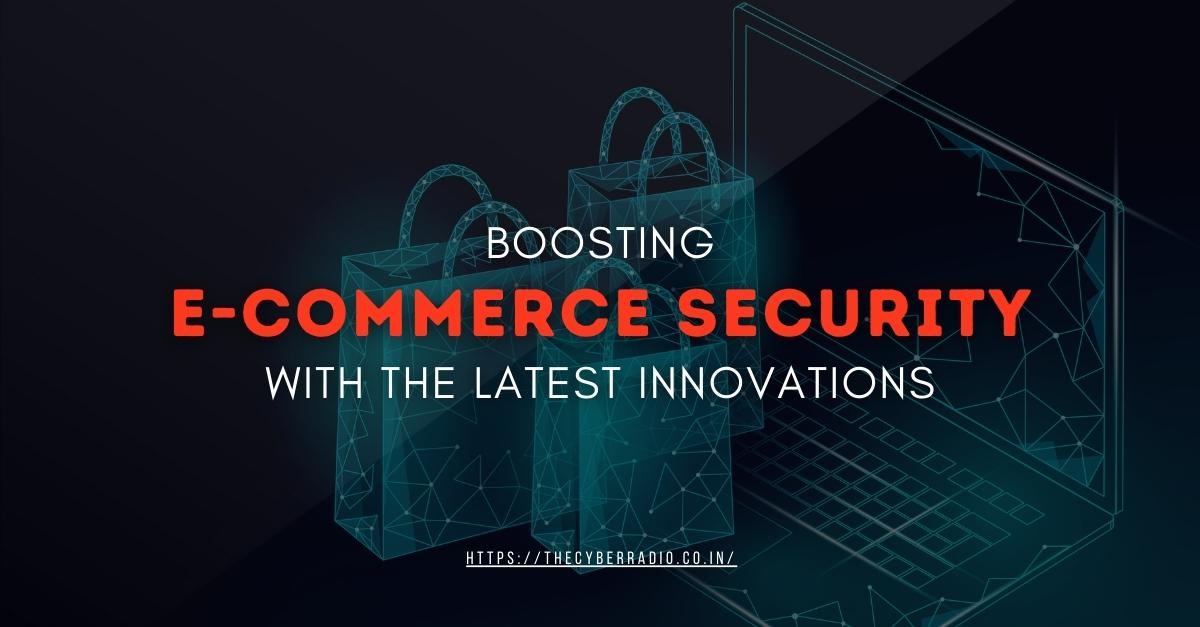Introduction
In the dynamic world of online commerce, where the click of a button can bring your favourite products right to your doorstep. As we completely indulge in the convenience of e-commerce, it’s crucial to practically discuss a topic that specifically affects us all – e-commerce security.
Imagine this: you’re about to make a purchase, and suddenly, the thought crosses your mind notably – “Is my payment information safe?” Fear not! In this blog, we’ll dive into the style of the current state of e-commerce security, for the main part, explore the latest innovations that are shaping the future, and especially highlight all the primarily best practices to ensure that your every online shopping experience is not only hassle-free but also secure for all purposes, which is fairly important.
The Current State of E-Commerce Security:
Let’s begin by taking a closer look at the landscape of e commerce security today. Picture the online domain as a crowded marketplace, overflowing with both opportunities and risks.
a. Threat Landscape
Just like in any market, a few objectionable characters are lurking in the shadows of the digital world. Cybercriminals are on a mission, seeking vulnerabilities to exploit for their own gain. From phishing scams to malware attacks, the threats generally are diverse and evolving.
To stay a step ahead, it’s crucial for e-commerce platforms to adopt robust security measures in a big form. After all, nobody truly wants their personal information or hard-earned money falling into the wrong hands.
b. Consumer Trust Issues
Now, let’s talk about trust – the base of any successful relationship, including the one between you and your typically favourite online store. When any customers hesitate even the slightest due to security concerns, it impacts the entire e-commerce ecosystem.
Imagine you discover an incredible deal on a product you’ve been eyeing for weeks, but the website looks a bit sketchy. Will you proceed with the purchase in a fine way? Probably not. Building and maintaining trust really is vital for the continued growth of the e-commerce industry.
Emerging Technologies and Their Impact
| Emerging Technology | Description | Impact |
|---|---|---|
| Blockchain for Secure Transactions | Decentralized ledger technology used to record transactions across multiple computers. | Ensures secure, transparent, and traceable transactions, safeguarding financial information and building trust through immutable records. |
| AI for Fraud Detection | AI-driven solutions that monitor online transactions, learn user behavior, and identify anomalies in real-time. | Analyses patterns, detects unusual activities, and flags potentially fraudulent transactions, mitigating risks of online fraud. |
| AI-driven solutions that monitor online transactions, learn user behaviour, and identify anomalies in real-time. | Analyses patterns, detects unusual activities, and flags potentially fraudulent transactions, mitigating risks of online fraud. | |
| Biometric Authentication | Utilizes unique physical characteristics such as fingerprints or facial features for user identity verification. | Adds an extra layer of security by ensuring only authorized users can access accounts, enhancing user experience and deterring fraudsters. |
| Tokenization for Secure Payment Processing | Technique that replaces sensitive payment data with unique tokens, rendering it useless to cybercriminals even if intercepted. | Significantly reduces the risk of payment fraud and data breaches, streamlines compliance with industry regulations. |
| SSL/TLS Encryption | Secure Socket Layer (SSL) and Transport Layer Security (TLS) encryption protocols protect data transmission between users and websites, ensuring data confidentiality. | Encrypts data transmitted over the internet, preventing interception by unauthorized parties and securing sensitive information such as payment details. |
| Two-Factor Authentication | Requires users to provide two forms of verification before accessing their accounts, typically a password and a unique code sent to their mobile device. | Adds an additional layer of security beyond passwords, reducing the risk of unauthorized access and protecting user accounts from cyber threats such as phishing. |
| Data Loss Prevention (DLP) | Implements policies and technologies to prevent the unauthorized exposure of sensitive information. | Monitors, detects, and blocks attempts to leak sensitive data, protecting against data breaches and ensuring compliance with regulatory requirements. |
| Web Application Firewalls (WAF) | Filters and monitors HTTP traffic between a web application and the internet, protecting against common web-based attacks. | Detects and blocks malicious traffic, such as SQL injection and cross-site scripting attacks, safeguarding web applications from exploitation and data breaches. |
| Secure Development Lifecycle (SDL) | Integrates security practices into the software development process, ensuring that security is prioritized from the initial design phase to deployment. | Identifies and mitigates security vulnerabilities early in the development lifecycle, reducing the likelihood of security incidents and enhancing the overall security posture of software applications. |
Best Practices for E-Commerce Security:
Now that we’ve explored the innovations shaping e-commerce security, let’s dive into some best practices that can enhance your online shopping fortress:
a. Secure Payment Gateways
The gateway to a secure transaction essentially lies in the payment process, or so it is assumed. Look for online stores that use trusted payment gateways, which really encrypt your payment information during the transaction. This encryption ensures that even if a basic cybercriminal intercepts the data, it particularly remains unreadable and useless. Always check for secure payment symbols such as the padlock icon in the address bar and for the most part opt for payment options that actually offer an extra layer of security, for all transactions such as two-factor authentication.
b. Data Protection Policies
Before hitting that ‘Buy Now’ button, take a moment to review the website’s data protection policies clearly. Ensure the platform follows industry-standard practices for handling and securing your any sort of personal information.
Look for a completely detailed and clear privacy policy, specifically understand how your data will be used, and especially verify that the website complies with data protection regulations. Reputable e-commerce platforms prioritize your privacy, providing you with peace of mind as you specifically get on your online shopping journey in a significant way.
c. Strong Password Practices
Your password is the first line of defines against unauthorized access to your account. Opt for strong, unique passwords that combine letters, numbers, and special characters for all the protection and safeguard your account with this simple practice.
Avoid using easily guessable information especially like your name or birthdate as it creates an easy way for cyber criminals. Consider using a reputable password manager to generate and store complex passwords securely.
Additionally, enable multi-factor authentication (MFA) whenever possible. MFA adds an extra layer of security by requiring an actual second form of verification, such as a code sent to your phone, in addition to your password, in order to protect your account in a significant way.
d. Regular Software Updates
Keeping your devices and software up to date is crucial for maintaining security. Software updates often include patches for known vulnerabilities that cybercriminals could exploit. Enable automatic updates whenever possible to ensure you’re always running the latest, most secure versions of your operating system, browser, and other applications.
Conclusion:
As we come to the end of this blog, through the domains of e-commerce security, one thing is clear. The digital marketplace, for the most part, is still evolving, so practically, the measures are still being put in place to essentially protect all of your transactions on a major scale.
By embracing innovations like blockchain and AI, adhering to best practices that potentially secure payment gateways, and using platforms that have robust data protection policies, you can definitely fortify your online shopping experience. Remember, the key to a secure e-commerce ecosystem is a collective effort on a major scale.

